AP Environmental Science: Unit 1, AP Environmental Science Unit 2, AP Environmental Science Unit 3
0.0(0)
0.0(0)
Card Sorting
1/327
Earn XP
Description and Tags
Study Analytics
Name | Mastery | Learn | Test | Matching | Spaced |
|---|
No study sessions yet.
328 Terms
1
New cards
Biogeochemical Cycles
The movement of abiotic factors between the living and nonliving components within ecosystems; also known as nutrient cycles (i.e., water cycle, carbon cycle, oxygen cycle, and nitrogen cycle).
2
New cards
The Water Cycle
Cycle of water through the earth- Evaporation, condensation, precipitation, run off, transpiration, infiltration.
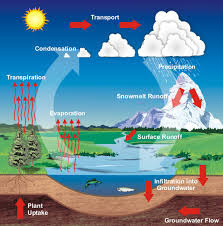
3
New cards
Condensation
The change of state from a gas to a liquid
4
New cards
Run off
The draining away of water (or substances carried in it) from the surface of an area of land, a building or structure, etc.
5
New cards
Transpiration
Evaporation of water from the leaves of a plant
6
New cards
Infiltration
Flow of water from the land surface into the subsurface
7
New cards
The Carbon Cycle
The organic circulation of carbon from the atmosphere into organisms and back again. Humans impact this by burning fossil fuels and cutting down trees,

8
New cards
The Nitrogen Cycle
The transfer of nitrogen from the atmosphere to the soil, to living organisms, and back to the atmosphere. Humans impact this by altering the amount of nitrogen that is stored in the biosphere.
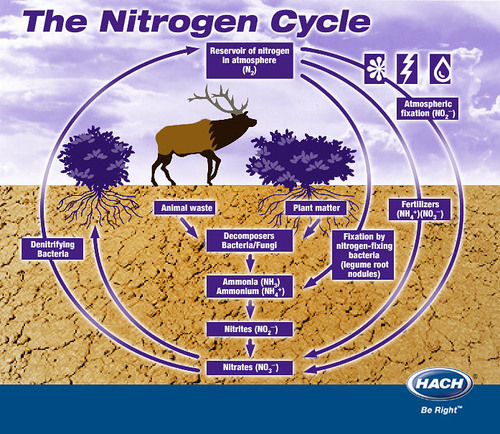
9
New cards
The Phosphorus Cycle
The movement of phosphorus atoms from rocks through the biosphere and hydrosphere and back to rocks.
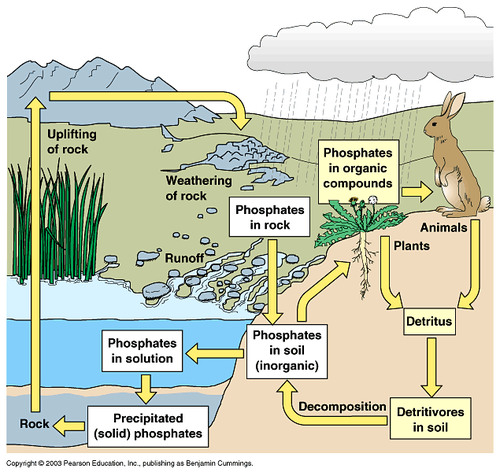
10
New cards
Where are the four major areas of water storage on Earth?
Atmosphere, surface water, ground water, and living things
11
New cards
Ecology
Study of how organisms react with each other and the non-living environment
12
New cards
Abiotic Factors
Nonliving components of environment.
13
New cards
Biotic Factors
All the living organisms that inhabit an environment
14
New cards
Habitat
Where an organism lives and any aspect of the location
15
New cards
Niche
Full range of physical and biological conditions in which an organism lives and the way in which the organism uses those conditions
16
New cards
Organism
Any form of life. Belongs to any of the 6 kingdoms
17
New cards
Species
Group of organisms of same type that can reproduce to have fertile offspring
18
New cards
Population
A group of individuals that belong to the same species and live in the same area
19
New cards
Community
All the different populations that live together in an area
20
New cards
Ecosystem
A biological community of interacting organisms and their physical environment. All abiotic and biotic factors.
21
New cards
Producers/Autotrophs
Organisms that make their own food from compounds and energy obtained from the environment
22
New cards
Photosynthesis
Conversion of light energy from the sun into chemical energy
23
New cards
Salinity
A measure of the amount of dissolved salts in a given amount of liquid
24
New cards
Plankton
Small, weakly-swimming, free floating organisms
25
New cards
Decomposers
Organisms that break down the dead remains of other organisms
26
New cards
Phytoplankton
Photosynthetic algae found near the surface of the ocean
27
New cards
Layers of aquatic environments
Surface, Middle, Bottom.
Temperature, sunlight, oxygen content, and nutrients determine types and numbers or organisms in each layer
Temperature, sunlight, oxygen content, and nutrients determine types and numbers or organisms in each layer
28
New cards
Euphotic Zone
Surface layer where photosynthesis is usually confined too
29
New cards
Where are nutrients found in abundance?
In shallow and cold waters
30
New cards
Coral Reef
The most diverse marine biome on Earth, found in warm, shallow waters beyond the shoreline. Only in waters 18-30 degrees celsius
31
New cards
Watershed
The area of land that is drained by a water system
32
New cards
Human Impact on Freshwater Ecosystems
1. Dams, diversions, and canals fragment about 40% of our world's largest rivers
2. Flood control levees destroy aquatic habitats
3. Cities and farmlands add pollutants and excess plant nutrients to streams and rivers causing eutrophication
4. Many inland wetlands have been drained or filled to grow crops or have been covered with concrete, asphalt, and buildings
2. Flood control levees destroy aquatic habitats
3. Cities and farmlands add pollutants and excess plant nutrients to streams and rivers causing eutrophication
4. Many inland wetlands have been drained or filled to grow crops or have been covered with concrete, asphalt, and buildings
33
New cards
Biome
A group of ecosystems that share similar climates and typical organisms
34
New cards
Desert
An area where evaporation exceeds precipitation and usually has little vegitation. around 30 degrees or behind mountains

35
New cards
Grasslands
Usually occur in the interiors of continents in areas too moist for deserts and too dry for forests. Seasonal drought
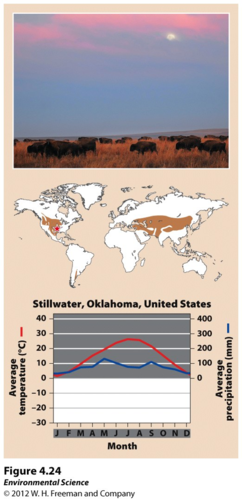
36
New cards
Savanna
Grassland with sparse trees. Has warm temperatures year round with alternating wet and dry seasons. Plants have deep root systems
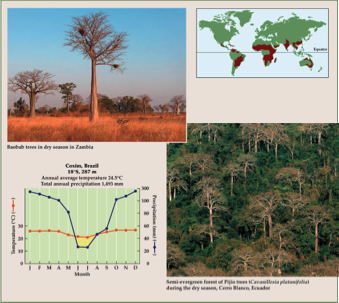
37
New cards
Tundra
Treeless arctic or alpine biome characterized by cold, harsh winters, a short growing season, and potential for frost any month of the year; vegetation includes low-growing perennial plants, mosses and lichens
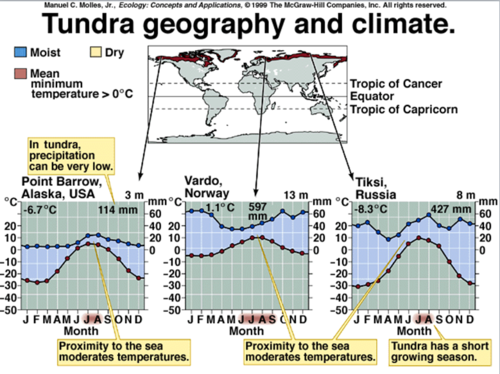
38
New cards
Tropical Rainforest
Found around the equator and has a wet and warm climate year round allowing for the growth of a dense canopy of tall trees. Have shallow root systems. Soil is low in nutrients. 40% have been destroyed
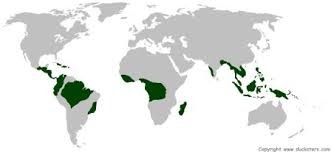
39
New cards
Temperate Deciduous Forest
Forest in a temperate region, characterized by trees that drop their leaves annually
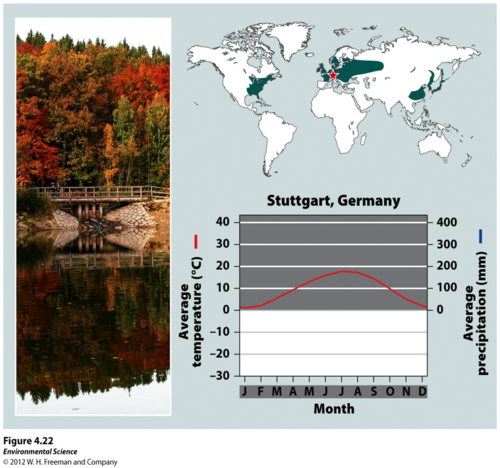
40
New cards
Taiga(Boreal Forest)
Subarctic climate with long, cold, dry winters, and short , mild summers. Dominated by coniferous evergreen trees. Plant diversity is low
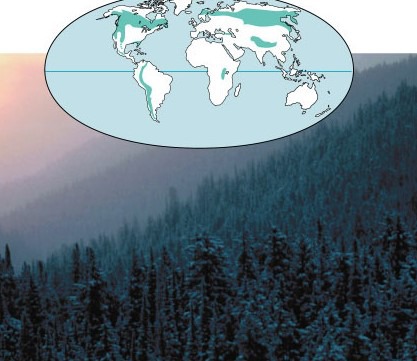
41
New cards
Chemosynthesis
When organisms use geothermal energy to convert inorganic compounds into carbohydrates
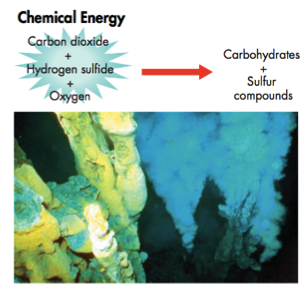
42
New cards
Consumers
An organism that obtains energy and nutrients by feeding on other organisms or their remains
43
New cards
Parasitism
A relationship between two organisms of different species where one benefits and the other is harmed
44
New cards
Mutualism
A relationship between two species in which both species benefit
45
New cards
Commensalism
A relationship between two organisms in which one organism benefits and the other is unaffected
46
New cards
Intraspecific competition
Competition among members of the same species
47
New cards
Interspecific Competition
Competition between members of different species
48
New cards
Resource Partitioning
When species competing for similar scarce resources evolve specialized traits that allow them to share resources by using parts of them, using them at different times, or using them in different ways
49
New cards
How does the phosphorus cycle differentiate from other biogeochemical cycles?
It does not include a gas phase
50
New cards
What two factors are most important in determining the type of biome that exists in an area?
Temperature and precipitation
51
New cards
Coral bleaching
A phenomenon in which algae inside corals die, causing the corals to turn white. When this happens, the habitat for the animals are destroyed
52
New cards
What is responsible for eutrophication?
Land runoff is accelerated and more nutrients such as phosphates and nitrate are supplied to lakes and rivers, and then to coastal estuaries and bays

53
New cards
Greenhouse effect
Natural situation in which heat is retained in Earth's atmosphere by carbon dioxide, methane, water vapor, and other gases. It helps maintain a manageable temperature on Earth.

54
New cards
Net Primary Productivity (NPP)
The energy captured by producers in an ecosystem minus the energy producers respire. NPP=GPP-R
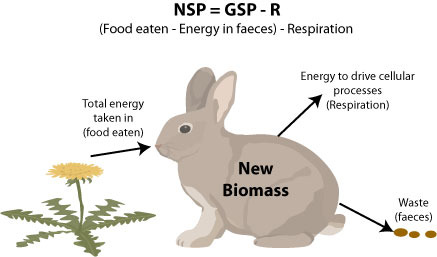
55
New cards
Food Chain
A series of steps in which organisms transfer energy by eating and being eaten

56
New cards
Food web
A community of organisms where there are several interrelated food chains
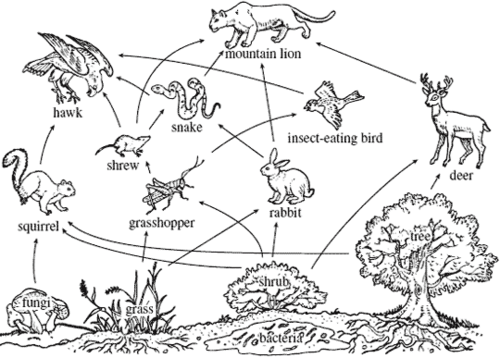
57
New cards
What limits the number of trophic levels in an ecological pyramid?
Decrease in energy at higher trophic levels limits this. When the number of links keep increasing, the amount of energy available decreases, as only 10% of energy gets transferred from one trophic level to the next
58
New cards
Ecological Efficiency
Percentage of energy transferred from one trophic level to another in a food chain or web
59
New cards
Biomass
A measure of the total dry mass of organisms within a particular region
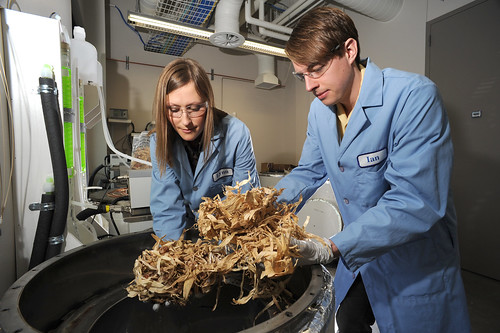
60
New cards
Energy Pyramid
A pyramid that shows the total amount of energy available at each trophic level
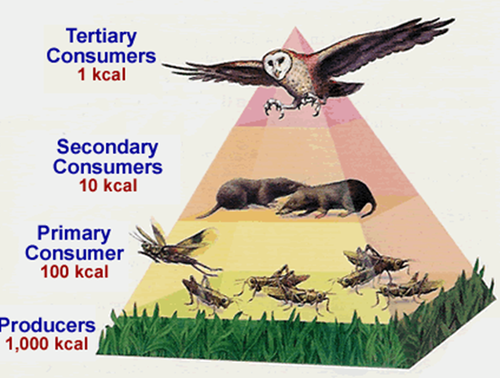
61
New cards
Biomass Pyramid
Diagram representing the biomass in each trophic level of an ecosystem

62
New cards
Gross Primary Productivity (GPP)
The total amount of solar energy that producers in an ecosystem capture via photosynthesis over a given amount of time
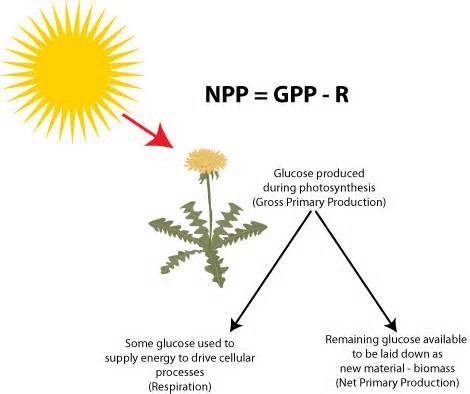
63
New cards
Human impact on the water cycle
Humans impact this by storing water in reservoirs, irrigation, deforestation, and putting chemicals in it

64
New cards
competitive exclusion principle
Ecological rule that states that no two species can occupy the same exact niche in the same habitat at the same time
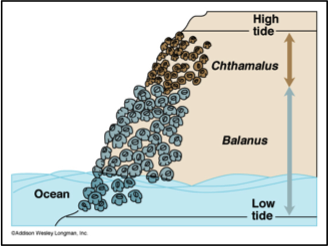
65
New cards
uptake
rate of absorption of a chemical back into the cycle
66
New cards
source
the place where part of a cycle begins
67
New cards
sink
a storage place of an element in a cycle
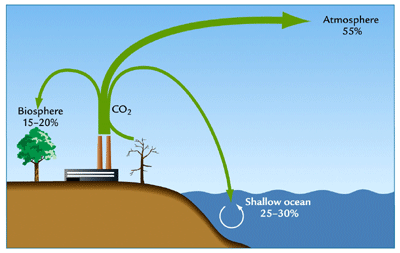
68
New cards
reservoir
a large natural or artificial lake used as a source of water supply.
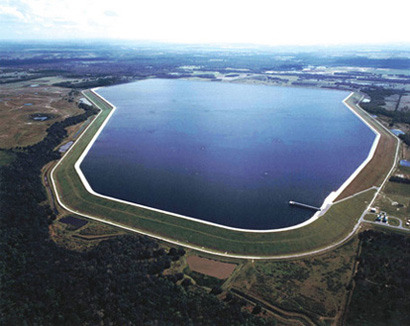
69
New cards
nitrogen fixation
Process of converting nitrogen gas into ammonia by bacteria
70
New cards
Nitrification
ammonia is converted to nitrate ions (NO3-).
71
New cards
Assmilation (of N2)
Nitrates are absorbed by plants and converted into proteins
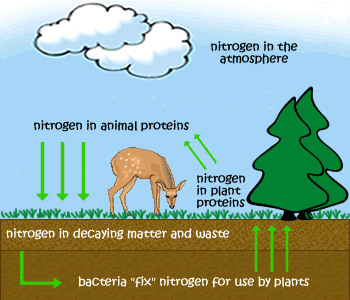
72
New cards
Ammonification
The process by which fungal and bacterial decomposers break down the organic nitrogen found in dead bodies and waste products and convert it into inorganic ammonium
73
New cards
Denitrification
process in which fixed nitrogen compounds are converted back into nitrogen gas and returned to the atmosphere
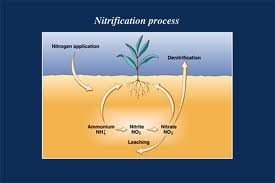
74
New cards
How do humans impact the nitrogen cycle?
Excessive use of fertilizers puts too much nitrogen in the soil.
75
New cards
how do humans impact the phosphorus cycle ?
Farming and the use of fertilizers and livestock. Also detergents add too much P
76
New cards
How do humans impact the carbon cycle?
Burning fossil fuels in combustion increases CO2 in the atmosphere. Deforestation removes trees as a CO2 sink. Natural gas adds methane
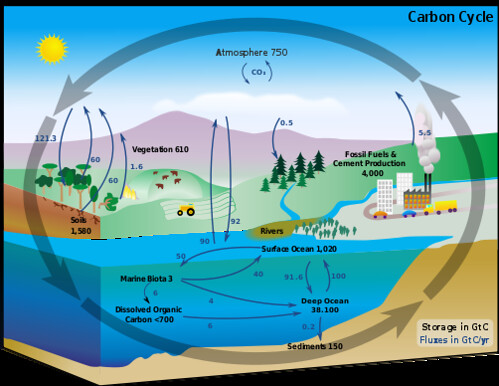
77
New cards
Climatogram
a graph used to show both annual precipitation and temperature in an area
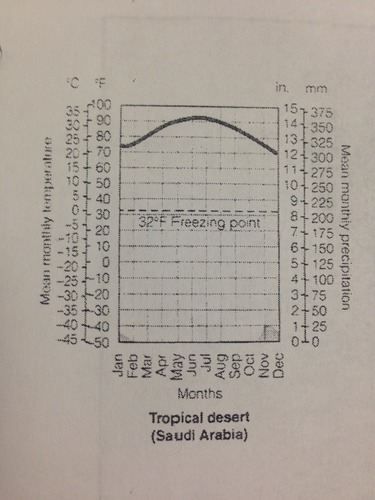
78
New cards
benthic zone
the muddy bottom of a lake, pond, or ocean
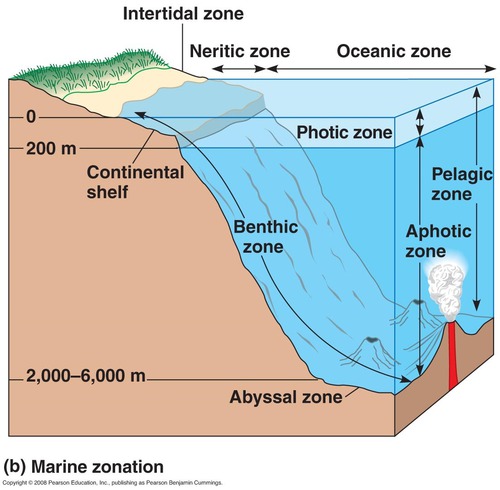
79
New cards
littoral zone
a shallow zone in a freshwater habitat where light reaches the bottom and nurtures plants
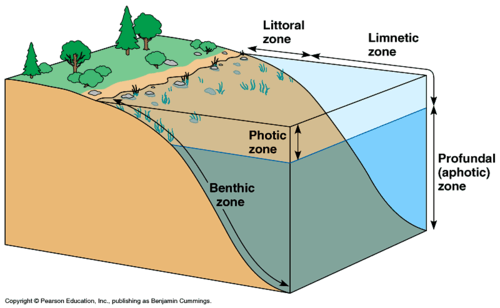
80
New cards
limnetic zone
In a lake, the well-lit, open surface waters farther from shore.
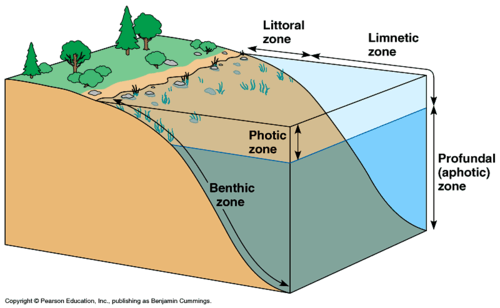
81
New cards
photic zone
Portion of the marine biome that is shallow enough for sunlight to penetrate.
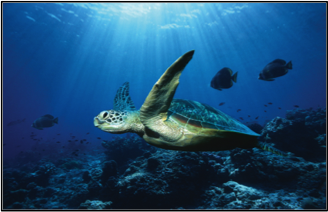
82
New cards
eutrophic
Water characterized by an abundant accumulation of nutrients that support a dense growth of algae and other organisms- high productivity, usually low O2
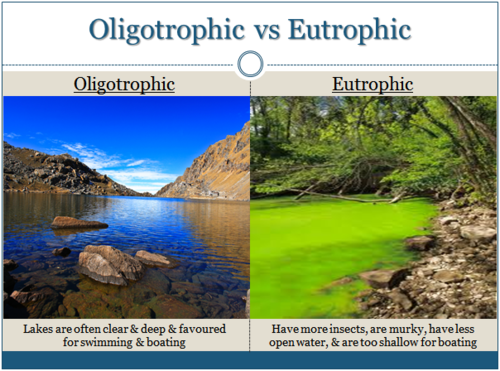
83
New cards
temperate rainforest
a coastal biome typified by moderate temperatures and high precipitation
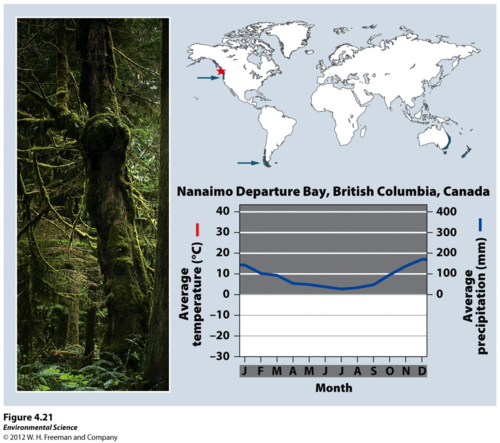
84
New cards
Chapparal
A scrubland biome of dense, spiny shrubs found at midlatitudes along coasts where cold ocean currents circulate offshore; characterized by mild, rainy winters and long, hot, dry summers.
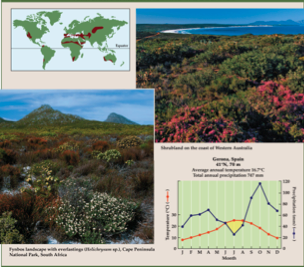
85
New cards
Legumes
beans, peas, lentils - plants with nodules that house nitrogen fixing bacteria
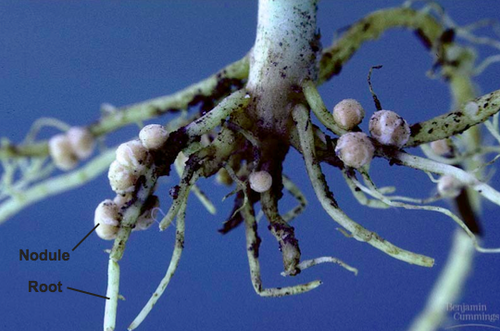
86
New cards
Aquifer
A body of rock or sediment that stores groundwater and allows the flow of groundwater.
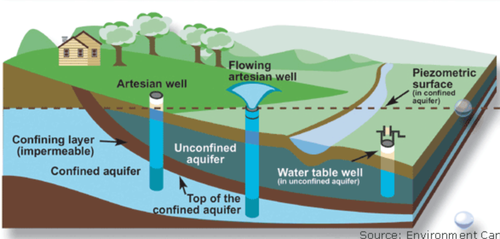
87
New cards
water table
the level below which the ground is saturated with water.
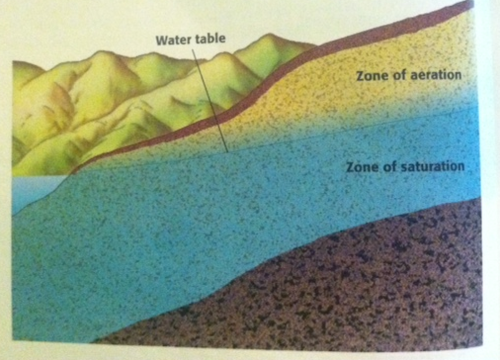
88
New cards
Consumer (Heterotroph)
An organism that is incapable of photosynthesis and must obtain its energy by consuming other organisms
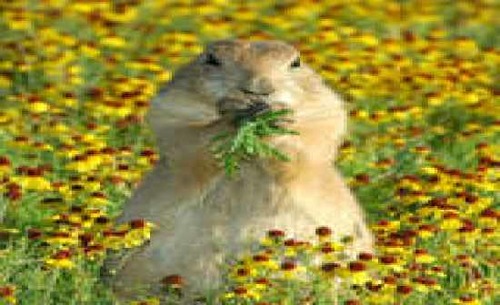
89
New cards
Trophic Levels
The successive levels of organisms consuming one another
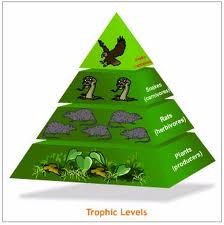
90
New cards
Biosphere
The region of our planet where life resides, the combination of all ecosystems on Earth
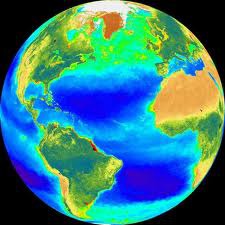
91
New cards
Net Primary Productivity
The energy captured by producers in an ecosystem minus the energy producers respire
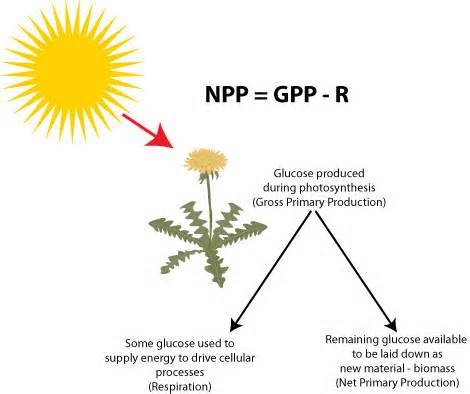
92
New cards
Food Chain
The sequence of consumption from producers through tertiary consumers
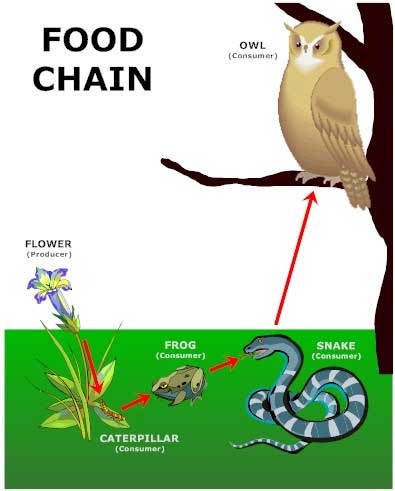
93
New cards
Anaerobic Respiration
The process by which cells convert glucose into energy in the absence of oxygen
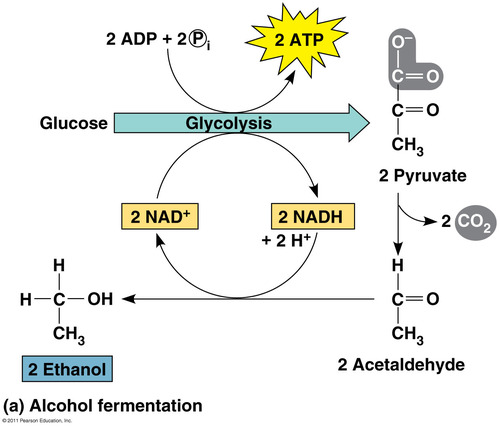
94
New cards
Producer (Autotroph)
An organism that uses the energy of the Sun to produce usable forms of energy
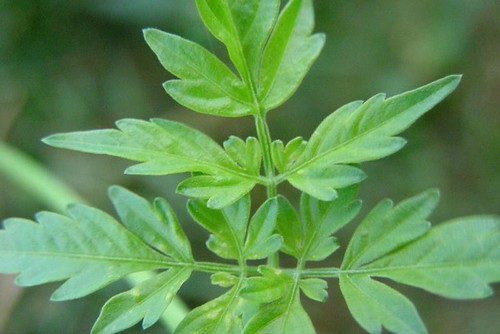
95
New cards
Tertiary Consumer
A carnivore that eats secondary consumers

96
New cards
Detritivore
An organism that specializes in breaking down dead tissues and waste products into smaller particles

97
New cards
Biomass
The total mass of all living matter in a specific area
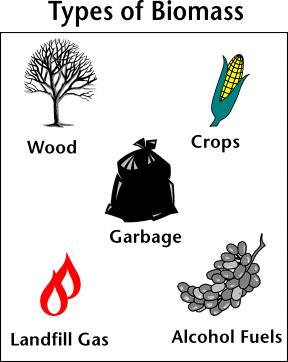
98
New cards
Trophic Pyramid
A representation of the distribution of biomass, numbers, or energy among trophic levels
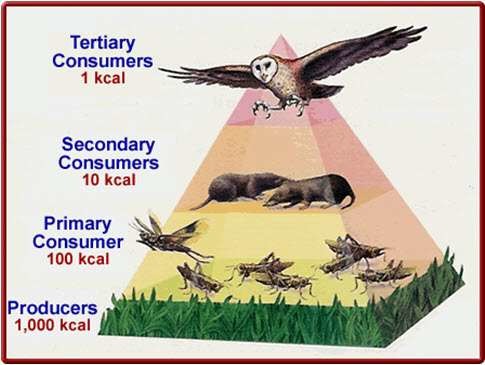
99
New cards
Ecological Efficiency
The proportion of consumed energy that can be passed from one trophic level to another

100
New cards
Gross Primary Productivity
The total amount of solar energy that producers in an ecosystem capture via photosynthesis over a given amount of time
